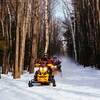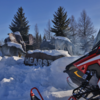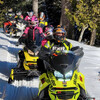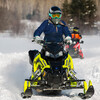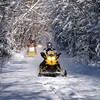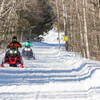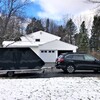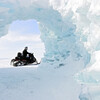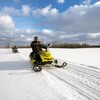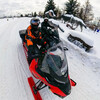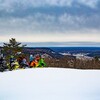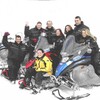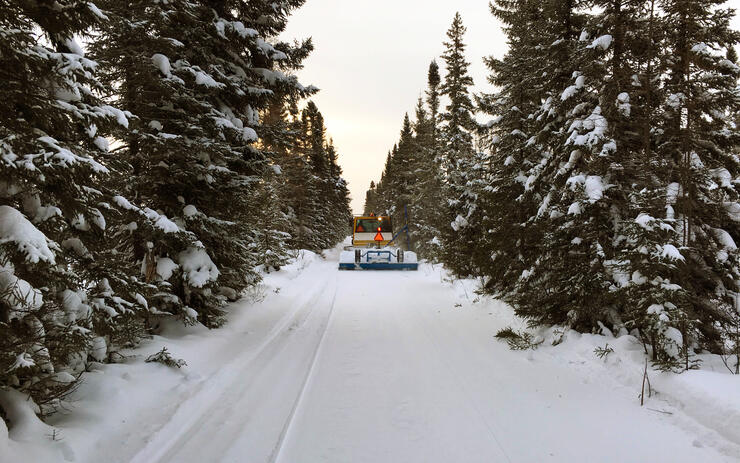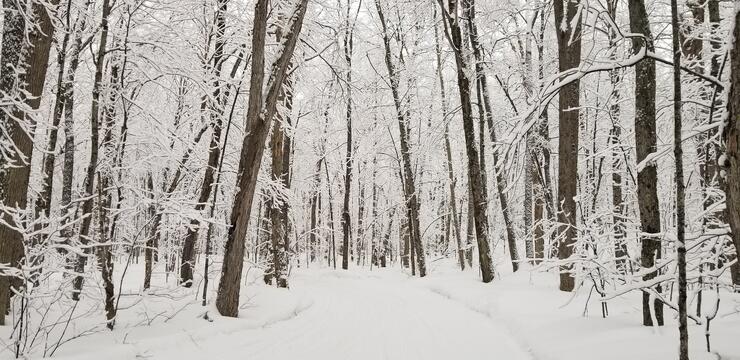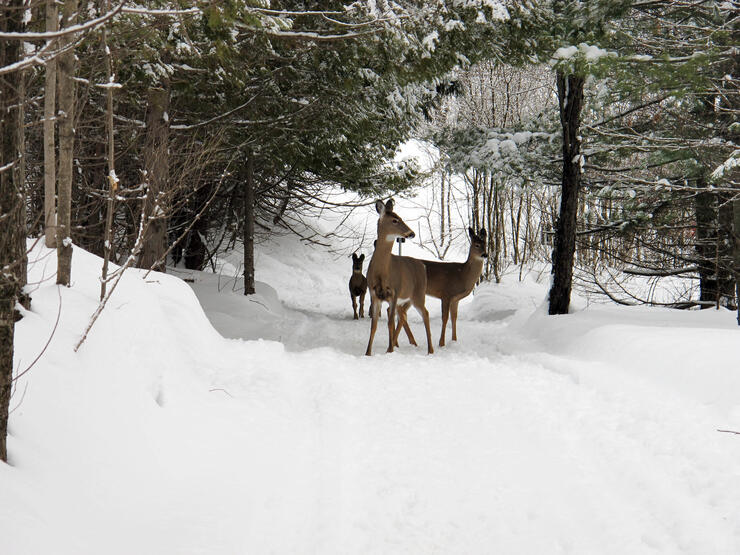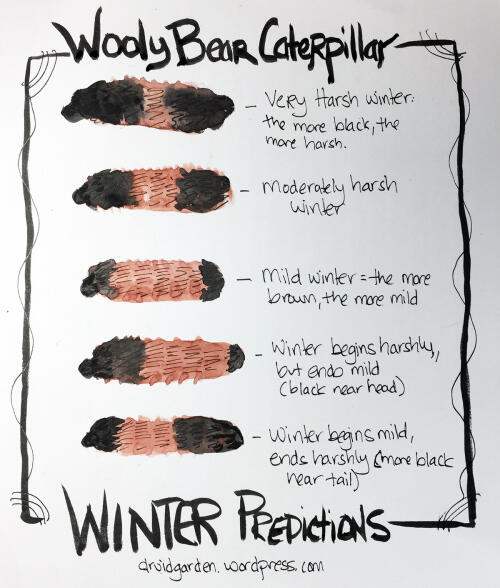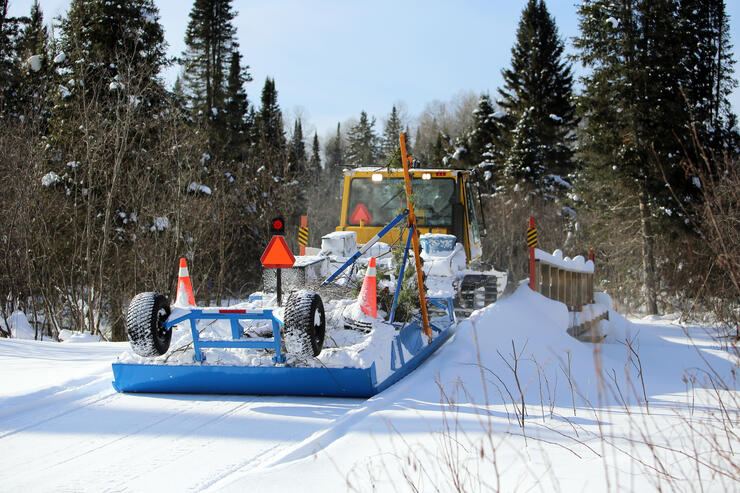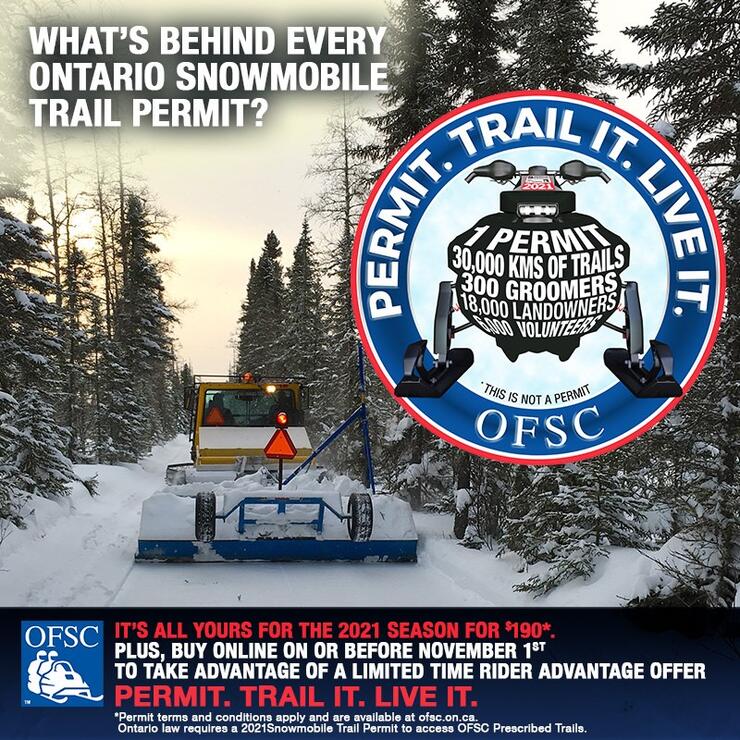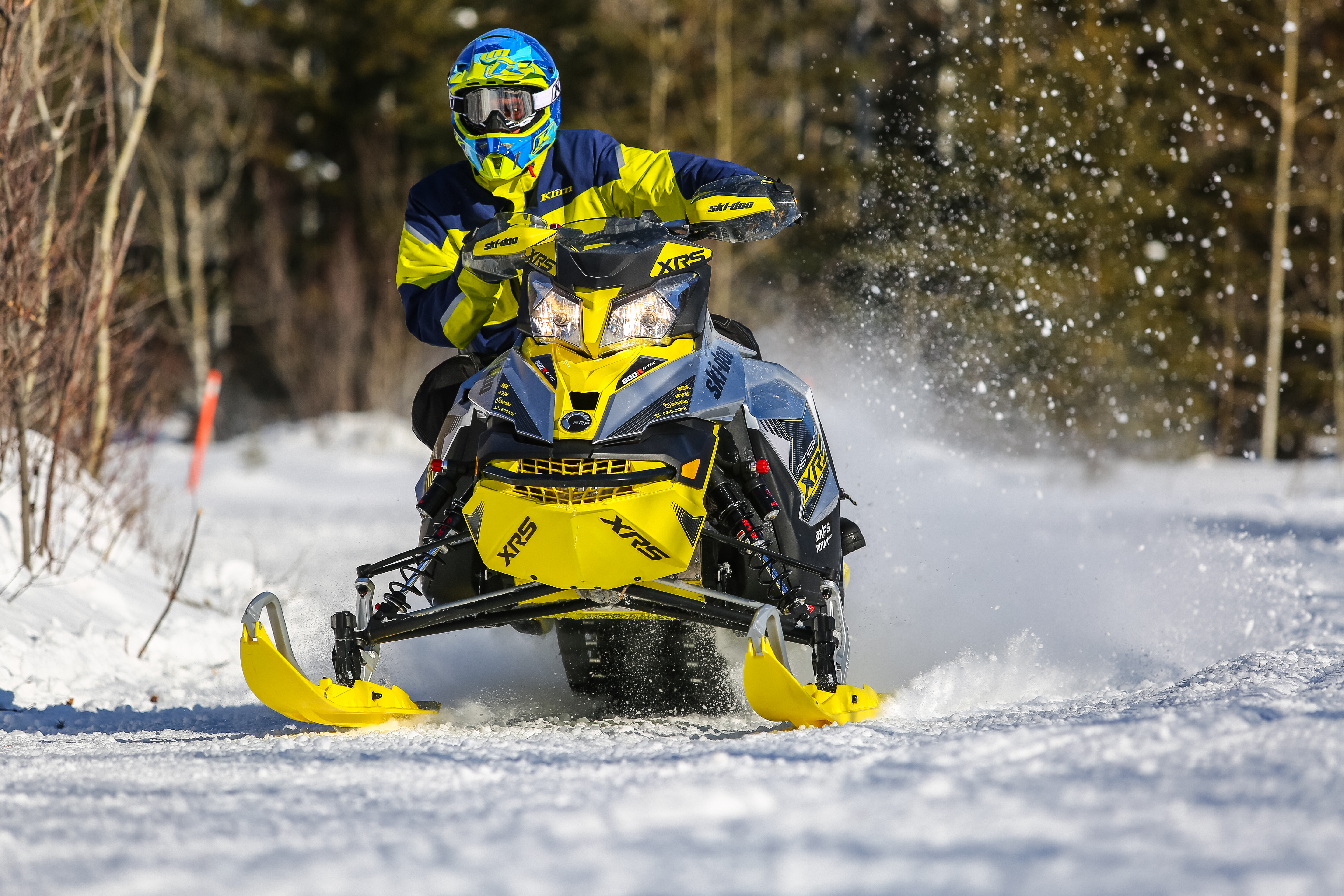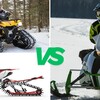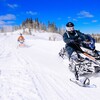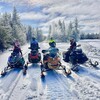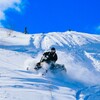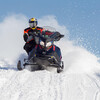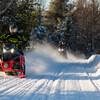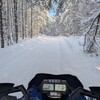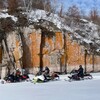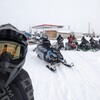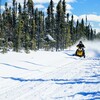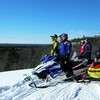
The 2020-21 Ontario Winter Weather Forecast
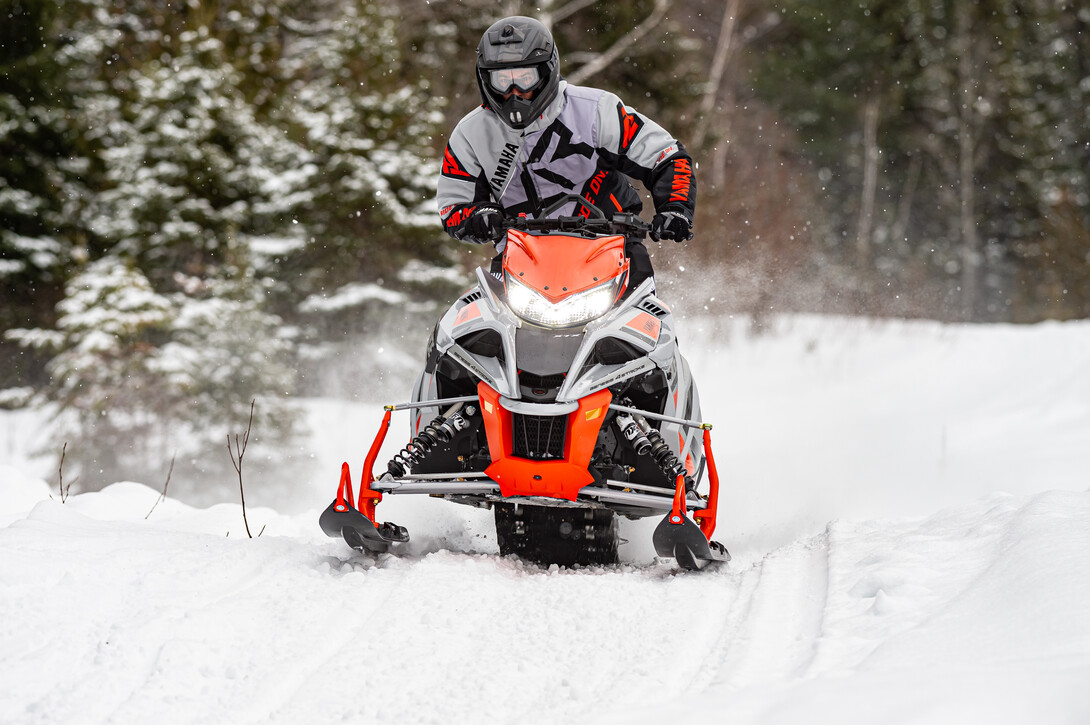
Ontario encourages everyone to travel safely during this time and to follow public health guidelines. It is important to practice physical distancing, frequent hand washing, and the wearing of a non-medical face covering where required or where physical distancing is a challenge.
Picture This.
The trees are capped with fresh snow from last night’s storm. The rising morning sun glistens through the weighted limbs casting yellow beams onto the fluffy white snow. The shadows are blue brisk and dark. It’s stunningly clear and cold. Then, a tree cracks and then another—you take a few steps, the snow crunching under your boots makes you smile, and you turn the key (or pull the cord), eyes wide open as the fuel ignites. The dead silence is broken by the quiet rumble of your sled’s engine warming up, the hot exhaust lingers in the air trapped by the surrounding cold. As you peer down the trail you notice that during your slumber the groomer has been at work—a white ribbon through the forest awaits! Will today be a great day? “All signs point to yes!”
If there’s anything I’ve learned over the past eight years of writing the Ontario Snowmobiler Winter Forecast, it's that bringing together a range of quality sources to formulate a prediction that is based on diversified intelligence has great merit and value to you snowmobilers. Looking back, this series of articles has been read and shared hundreds of thousands of times by Ontario snowmobilers. It’s become an annual tradition of sorts—an official sign that we're getting ready for snowmobile season.
I’m proud to say you’ve told me the inclusion of numerous references is one of the reasons why these yearly predictions are so valuable. And this year, some of my sources point towards “as I see it, yes,” while others tell us “don’t count on it.” Looking deeper we find scientific sources that tell us “it is certain” while natural signs point towards “outlook not so good.” There’s so much to consider but I always focus on the end goal of this article and that is to give you as much information as possible regarding the potential for epic snowmobile riding conditions. I’m very much in tune with the fact that our province is massive and that means winter can appear in different ways in different regions. Ontario’s size and diverse landscapes are some of the many factors that make it fantastic for snowmobiling and snowmobilers.
As a result, I deliver a best-in-class prediction of what the forthcoming winter will bring for sledders by a sledder. I hope “you may rely on it.”
Experts Everywhere
There’s no shortage of experts in the world today. The year of 2020 has definitely produced its fair share. An expert is defined as “a person who has a comprehensive and authoritative knowledge of or skill in a particular area”. One of the professionals that I look to every year for this article is David Phillips, a senior climatologist at Environment Canada. He began studying climatology over 30 years ago—a qualified and trusted expert in my book. David reported that Environment Canada’s forecast for this fall is calling for both warmer-than-normal and drier-than-normal conditions. In an interview, he noted, “What we’re seeing is maybe more warm days than cold days, but that doesn’t mean that there can’t be frost or snow on the pumpkins.” One of the potentially alarming trends, according to Phillips, is that we’ve seen a significant amount of days over 30°C this past summer. Ottawa had 18 days in July that were above 30°C—a few of them were 35°C or 36°C. Toronto also had 35 days this summer where the temperature reached above 30°C—this is more than double the normal average. It has been “without a doubt” an interesting summer and this warm weather was well accepted as many of us enjoyed more time than ever on and in Ontario's lakes and rivers.
Another expert, this time a meteorologist, is Dr. Doug Gillham who is a frequent contributor with The Weather Network. In a report issued in late September, Dr. Doug wrote that although we can expect to see winter during the fall season he expects that November will be much milder than last year and that we should expect periods of “pleasant fall weather” that will continue well into November. Doug says this weather will be nice for enjoying outdoor activities but watch out for storms.
Dr. Doug went on to explain, however, that he “cannot predict now” when it comes to the battle zone between the cold patterns in Western Canada and warm patterns in the Southeast U.S. that often produce very active storms. These are the storms that set up like they’re on train tracks. Doug finished his report by saying, “Unfortunately, it is still too early to know exactly where that storm track will set up.” He will release his final winter forecast at the end of November and at that time he will have a better indication of how these storms will flow. Dr. Doug ended with, “That will be the key to whether the upcoming winter is simply mild or whether it turns messy and wild.”
A winter forecast sneak peek!
We know as snowmobilers that the right conditions are needed to open trails: the swamps and lakes must freeze, and farmers must have the right fall conditions to harvest their crops. Judging by the information provided by David Phillips and Dr. Doug, the warmer weather will continue well into the fall season which should allow for ample trail prep and work by club volunteers and contractors. I suppose we’ll have to “concentrate and ask again” in November to see what these two experts think about the forthcoming winter.
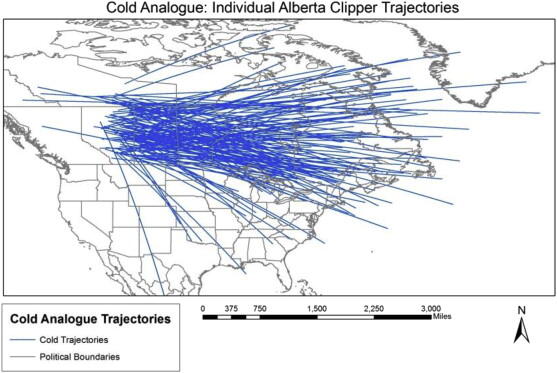
These clippers are coming for us–the exact path they'll take is undetermined.
Trust in Models
In early September, the National Oceanic and Atmospheric Administration (NOAA) upgraded their previous La Niña Watch to a La Niña Advisory. The NOAA says that El Niña conditions are will continue throughout the Northern Hemisphere Winter. The scientists say that there is a 75% chance that El Niña conditions will last right through until February 2021. So, what does this mean for us in Ontario? If “it is decidedly so” that El Niña will occur and stay well into our winter this could be great news for Ontario snowmobilers. Look at the maps below and you can see how La Niña will affect the jet stream and, subsequently, our winter here in Ontario. You can easily visualize when cool and wet air meet and channel over the Great Lakes how this produces an abundance of lake effect snow and a consistent storm track. You can also see how a jet stream in this position may draw down the Polar Vortex.
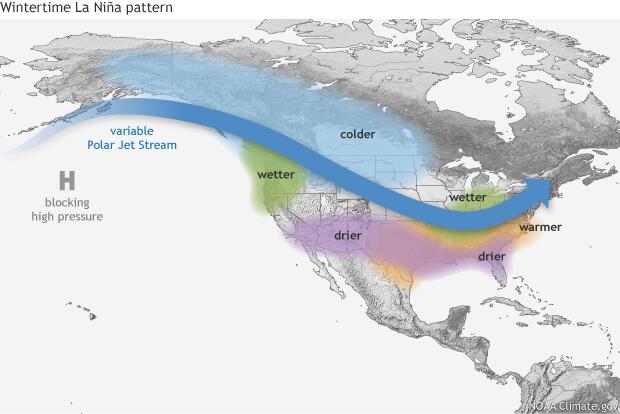

Average snowfall patterns for all La Niña years.
Filled to the Brim
In a Physics Today article from October 2020, we learn that the Great Lakes, which hold 21% of the worlds fresh water, show no sign of receding from record-high levels. The lakes do fluctuate according to changes in rain, snowfall, and evaporation however outflow from the lakes is essentially constant. This means that the weather over and around these mega lakes has a big impact on their water levels while in turn, the water level affects the weather. With so much water in the lakes, it takes longer for them to cool down, thus, longer to freeze. Frozen lakes = no evaporation. Open water in the winter can mean lake effect snow. You can see the connection I’m making. From 1998 through to 2013, water levels in the Great Lakes reached all-time lows. Since then, water levels have increased at an alarming rate. In fact, the period from 2014-2017 saw the fastest three-year increase in water levels since record keeping began. The article goes on to detail that precipitation has increased ten percent over the past century and is expected to grow another ten percent over the next 100 years. Notably, the precipitation is increasing in larger events: big snow and heavy rainstorms. We know, based on the information that David Phillips of Environment Canada provided, that we’ve had more hot days than normal this past summer. So, it’s no surprise that the surface temperatures of the Great Lakes are warmer than normal. Let’s hope for the shoreline and marina operator’s sake we see a strong El Niña event which will bring colder than normal temperatures to the lakes and boost evaporation in the form of snow!
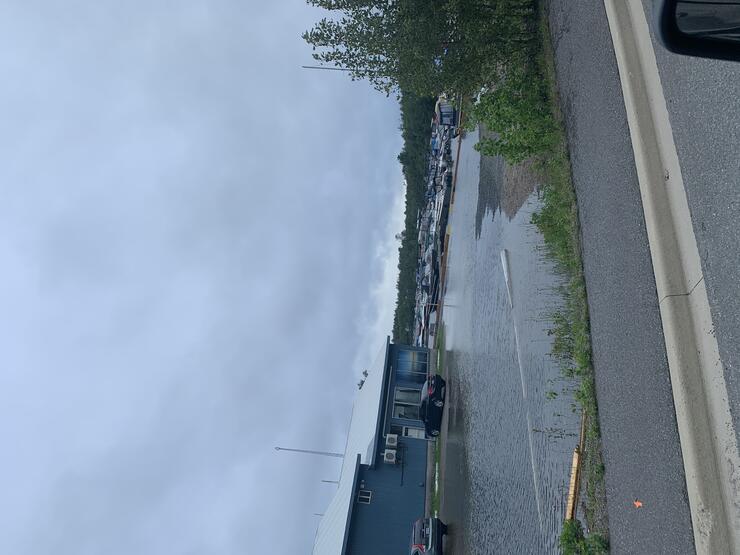
Pointe Au Baril, Ontario in the summer of 2020, Georgian Bay consuming the shoreline and parking lot at Desmasdons Boat Works.
Winter prediction? Snow Train
All aboard the Snow Train! I’m digging the fun phrases the Almanac comes up with each year. We’ve had “Polar Coaster,” “Teeth chattering ahead,” and “Game of Snows.” But the best has to be the “Snow Train.” And with the Farmer's Almanac boasting a self-proclaimed 80% accuracy rate it sounds like Ontario’s going to have an abundance of snow! The Almanac stated, “If you like snow, then you should head out to western Quebec and Ontario, where snowier-than-normal conditions are forecast.” The Canadian Farmers’ Almanac is red-flagging the second week of January over Ontario and Quebec for a possible heavy snowfall.
My take is that the “snow train” and an “Alberta clipper” or “Canadian Clipper” are synonymous and share the exact same trajectory and blustery outcomes. Clippers are fast-moving, low-pressure weather systems where we see sudden temperature drops, sharp winds, and quick but heavy bursts of snow. You can easily visualize how the “Snow Train” clipper will produce mega snow events. These events, of course, are not only from the warmer, low-pressure system tracking through but also the fast-moving cold front that whips up the mega squalls. We’ve all seen a clipper roll through dumping a quick blast of snow over a widespread area, but the real snow comes from the gargantuan squall train produced by the cold air moving over the Great Lakes. If the Almanac is correct (or even 80% correct) snowbelt areas could be in for a trainload of snow. “Yes—definitely.” I firmly believe this may be some of the best news from the Almanac for Ontario snowmobilers in several years.
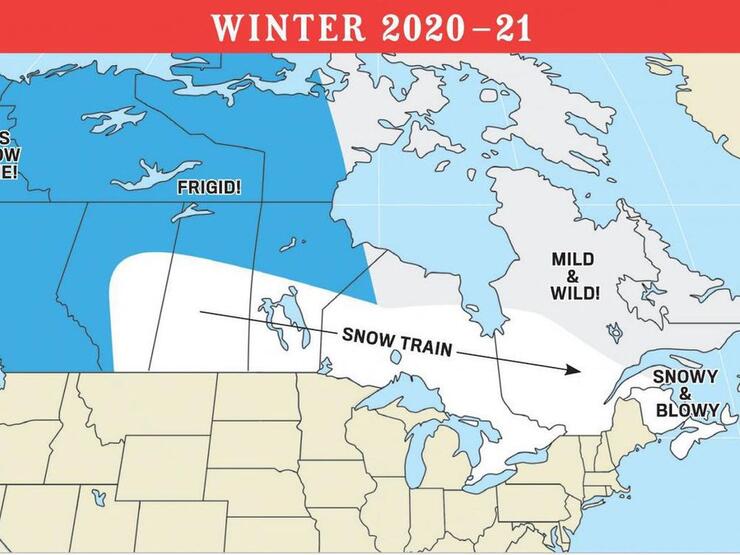
Here comes the snow train for 2020-2021.
Alone in The Woods
He really does spend more time alone in the woods than anyone else I know. Back in the spring, Bill Steer self-isolated for well over two months—his only company was his imagination and a canoe. Rest assured he was never bored while immersed in nature.
By observing nature, Bill Steer has been predicting the weather for the past eight years with a prediction rate of about seventy-five percent accuracy. The founder of the Canadian Ecology Centre is a part-time faculty member at Nipissing University and Canadore College. He was trained by the late Gord Restoule of Dokis First Nation. Bill said, “He trained me well but not sure if Gord accounted for climate change?" Steer noted there are four parts to his prediction formula. "When will winter start? How long will it last? How cold will it be? And how much snow will we have?"

Bill Steer, founder of the Canadian Ecology Centre, looks to nature to determine what's in store.
He is not sure yet about the last three and told me to “ask again later.” Bill indicated that he’s predicting an early start to winter and said that the “outlook is good”. Bill continued to expand on his prediction. “There have been so many rapid changes as of late. The dusting of red on the hills of Havilland Shores just north of the Soo two days ago coming back from Ignace.” (This was Sept. 6th and way too early according to Bill.)
Bill noted, “The bracken ferns turned before it was time, the forest floor went from lush to grave. The songbirds were long gone before September arrived. The blue jays and chickadees are raucous. The congregation of flocks of sandhill cranes were all ready to migrate which is another early sign of impending winter. Many of the loons have left their lakes before a normal exit.” Bill says he will miss their call on a cool foggy fall morning paddle. Steer further observed that “Those squirrels are crazy with gathering green cones and seem to have an endless quantity of hidden caches. Bears are on the move fattening up as are the deer.”
On his early morning hikes, it seems to be unseasonably cool, the smell of summer is gone except for the late afternoon. Bill, like the animals, could taste fall’s arrival in the air. Near the water, Bill has observed “some extensive feed beds next to the beaver lodges." I note that last year he observed small beaver feed beds which he said is a sign of a shorter milder winter. Bill is going out on a limb but says we can expect an early winter start, the usual amount of snow throughout the winter, but no excessive amounts. Temperatures will be mild and there will be an early start to spring.
I always put great stock in Bill’s prediction. He brings together so many natural sources and has tuned his observation techniques over many years. This year I wanted to look deeper into these natural signs as a sort of confirmation of what Bill has reported. I looked to the Wooly Bear Caterpillar (Pyrrharctia Isabella – Isabella Tiger Moth) – a black and brown fuzzy fellow that is said to predict the forthcoming winter. Legend has it that the width of the brown band predicts the weather for the coming winter: a narrow band indicates a stormy, icy, cold winter while a wide band brown band indicates a mild, warm winter. The positioning of the band also predicts when winter will start and when it will end. Check out this cool graphic to help you "read" the Wooly.
Check out this Wooly Bear I found in my backyard. Is the forecast by this Wooly Bear a “Reply hazy, try again?” Or just fuzzy.
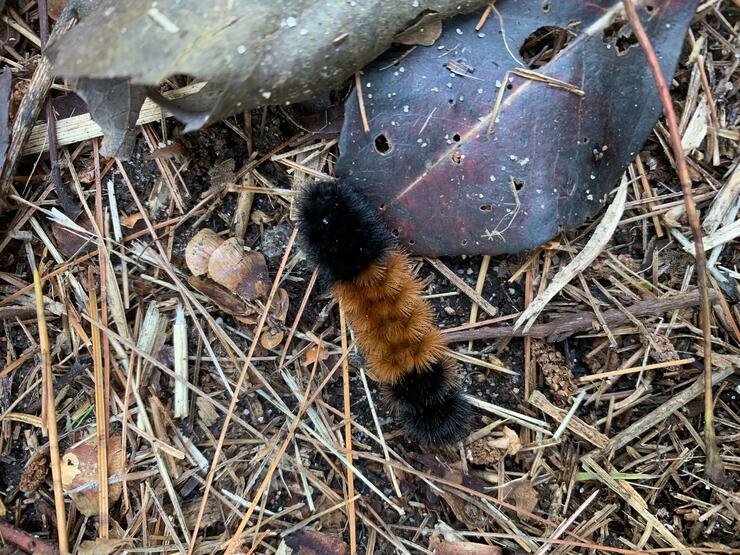
The Wooly Bear Caterpillar sending us mixed messages this year?
The Sledder's Pulse
I’ve kept a close eye on the unprecedented demand for off-road vehicles (ATV, SXS, Dirt Bikes) and experiences over the last few months, there’s been a tremendous number of new riders joining the powersports community—this is very exciting. I believe given the circumstances we’re going to see many people return to the great sport of snowmobiling who may have been absent in past years. In addition, we’re poised to attract new riders including more families—so I encourage you to share your passion and great experiences with others in hopes it will motivate them to give snowmobiling a try even if it’s just for a day. For the diehards (and you know who you are) it wasn’t even the August long weekend and I was hearing and seeing reports of snowmobilers buying new rides or planning their upgrades. This is at least a month ahead of the normal trend which normally starts post Labour Day. You’re all getting ready which is a great sign.
For those new or returning who may be reading this take a note from the diehard sledders and either buy that new ride now or fix yours up early—don’t wait for the snow to fly and trails to open to turn the key or pull the cord for the first time. We will all dearly miss the Toronto Snowmobile, ATV & Powersports show this fall, it’s always a highlight for me seeing everyone and chatting about new tech and ride plans. I encourage you to take the time you would normally spend attending a show and put it towards helping your local club.
Ontario Snowmobile trail permits are available now, in fact, they have been available since early September. The OFSC and club volunteers have worked continuously to preparing for the upcoming season. There are several new groomers rolling out to key areas in the province and countless hours have been spent navigating, preparing and implementing new measures that are all rolled into the Trail to Ride 2021 initiative. The OFSC’s president Murray Baker said in a news release “As usual, some regions will have trails ready to ride earlier than others, depending on their location and weather. Our main goal is to have trails in all OFSC districts ready to go as soon as Mother Nature allows. This initiative starts with ensuring that our districts, clubs and volunteers work smart and safe throughout this fall and winter to keep trails happening.” This is all great news in my opinion, for those of you that are “very doubtful” about trails opening. Consider your permit as an investment in the sport you love. “My reply is no” to riding with you if you do not have a permit and “my sources say no” trails in the future without the support from permit buyers–so please buy where you ride to ensure we have trails tomorrow.
The Prediction
“Yes” alas the prediction. Do you recall the scene I painted for you in the opening paragraph? It’s “most likely” that you will experience a good amount of this. Plan for extended fall with above seasonal weather for most of Ontario. Rest assured the turn to winter will be sharp, first marked by sub-zero nights and cool days and then by a series of seriously powerful Almanac predicted and Scientific Battle Zone confirmed “Snow Train” storms which will set us up with bountiful amount of snow. A White Christmas is in store for most, according to BackRoads Bill, producing extensive early January riding opportunities across the province. It’s going to take some time for the Great Lakes to freeze so the lake effect snow machine will be operating at full throttle. As we approach Spring Equinox in March it will also mark the end to winter for many in our province however the Northern part of the province will still be under a thick blanket of snow offering riding opportunities well into April.

The Last Word
This winter is going to be great. “Better not tell you now” how great because that will be up to you. For me, this winter will be one of the most special and memorable as I will introduce my newly born son, Finley, to snowmobiling! The forecast is out. Get outside! My best advice given eight years of forecasting is not to rely on the Magic 8 ball for when to ride. Just get out and ride when the snow is plentiful, and the trails are open. If there’s one thing you can be sure of in Northern Ontario, it’s that winter is guaranteed! See you on the trails.

Need inspiration? Discover trails to ride here.
Did you notice?
The 20 answers found on the icosahedron (20-sided figure) within the Magic 8 Ball are all within this article.
Recommended Articles

The Complete List of Snowmobile Events in Ontario 2025-2026
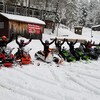
The Best Snowmobile-Friendly Lodges
Snowmobiling Winter Weather Forecast 2025-2026
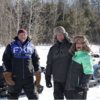
I Rode the Explorers Snow Tour in Ontario and Here’s What It Was Like

Why Ontario is One of the Best Snowmobile Destinations in the World
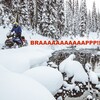
11 TikToks That Prove Ontario is the Best Place To Go Snowmobiling

5 Weekend Snowmobile Getaways Near the GTA
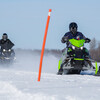
31 Ways To Get In The Know About Snowmobile Trail Riding in Ontario

A Beginner's Guide to Snowmobile Lingo

